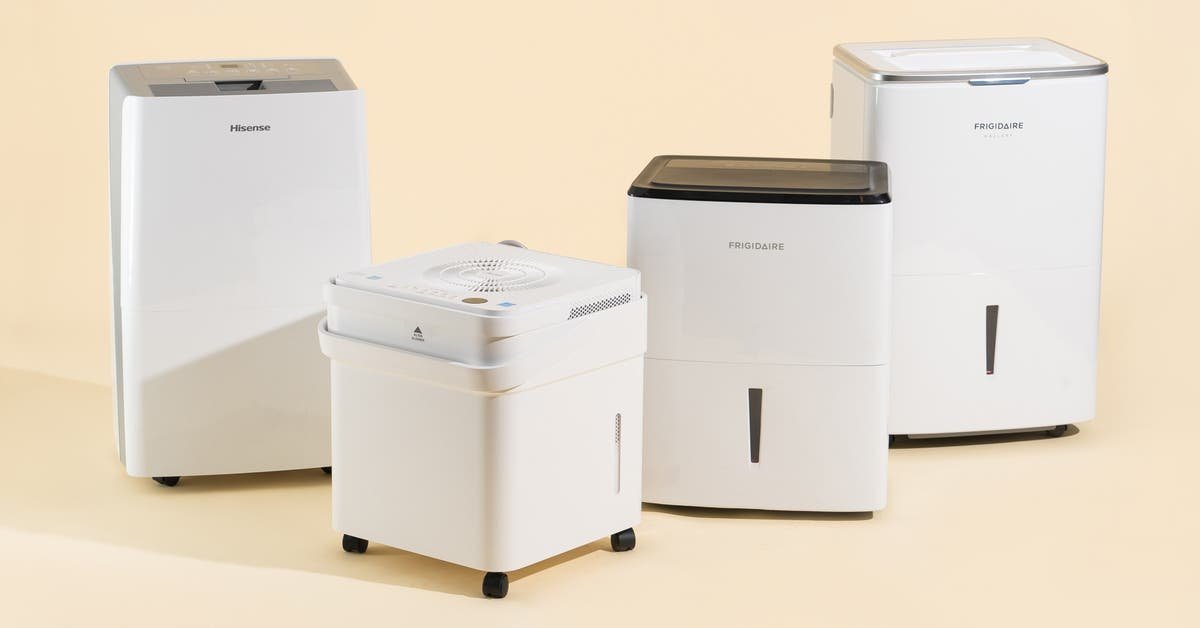
For this guide, we have always focused on condensing dehumidifiers, the most common and practical type for homeowners. These machines work by drawing air over chilled metal fins, causing water vapor in the air to condense and collect in a bucket, from which you then manually empty the water, pump it out, or passively drain it.
We have also always focused on two “sizes” of dehumidifier: those meant for keeping large or challenging spaces, like cellars, comfortably dry, and those meant for smaller and simpler spaces, such as a bedroom or laundry room. Under current Department of Energy regulations, these machines are commonly designated as 50-pint models (for spaces of up to about 1,200 square feet) and 20-pint models (for spaces of up to around 500 square feet). The pint number refers to the volume of water that a dehumidifier can remove from the air over the course of 24 hours, not the capacity of its bucket.
Because the Department of Energy regulations strictly constrain performance and energy-efficiency requirements, most dehumidifiers within a given “size” category work about the same. So we consider several other factors in narrowing our choices, including the following:
Ease of setup, maintenance, and operation: Dehumidifiers are heavy, so it’s a plus if they have comfortable, sturdy handles and smooth-rolling wheels. If you have to manually drain the bucket, you’ll also need to be able to lean down to floor level, remove and lift a water-filled bucket that can weigh from about 10 to almost 40 pounds, carry it outside or to a sink, empty it, and put it back in the machine—and you’ll likely need to do this at least once a day. Our own experience and that of our paid testers starkly underscored this issue as a potential dealbreaker, and leads us to strongly recommend setting up all dehumidifiers to passively empty themselves into a floor drain (or place them on a sturdy shelf and have them drain into a sink). Simple, well-lit controls are nice to have, too, as you may be running one of these machines in a dark basement.
Livability: Quiet operation is important in a dehumidifier, especially one that you’re using in a living space. Features such as built-in cord storage and easy-to-access drainage points (when you’re hooking up a hose for passive draining or removing it when the machine is not in use) make a dehumidifier less of a hassle to operate.
Owner reviews: Dehumidifiers are often asked to work around the clock for years at a time, so the long-term observations of owners is a valuable, if unscientific, record of their collective experiences with a given model—both positive and negative.
Pump-equipped options: Pump-equipped dehumidifiers can send the condensed moisture upward into a sink or out a window. That feature lets you use them in almost any cellar or basement, even those lacking floor drains, and theoretically it means that you won’t ever have to empty the bucket manually. However, pumps add up-front cost, and pump failures are common. We no longer prioritize a pump option in our picks, though we do note when one is available.
R-32 refrigerant: This type of refrigerant is replacing the previous standard refrigerant, R-410A, in many condensing appliances, including dehumidifiers. R-32 is more efficient and has lower global warming potential (GWP), so we prioritize its use.
We’ve tested dehumidifiers multiple times, in multiple settings, including in a pair of unsealed, chronically damp basements in Buffalo, New York, but since 2020 we’ve run the machines in a 135-square-foot (13.5-by-10-foot) basement office at Wirecutter’s Long Island City, New York, headquarters.
We use one of our humidifier picks to raise the humidity in the room, closing off the air-conditioning vents with tape and foil to minimize their effect on our readings. We then run each dehumidifier twice, once with both it and the humidifier on their highest settings, and once with each machine on low. These tests simulate, respectively, conditions in a very damp cellar after a rain event and conditions in a moderately humid living space. We run each test for an hour, during which we monitor the change in humidity using a digital hygrometer.
To get a sense of the dehumidifiers’ livability in a bedroom or a living room, we also measure their noise output from a distance of 6 feet.
Finally, we run each machine in an overnight shakedown test in the ambient conditions of our 3,100-square-foot open-floor-plan basement test space to discern their extended performance and to assess their ability to reach and maintain a target humidity.
When relevant, we test the functionality and ease of installation (or lack thereof) of the apps associated with Wi-Fi–enabled models.





